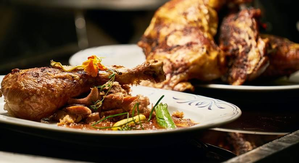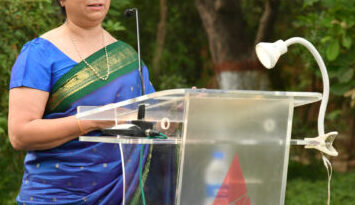Decoding the Chicken Dilemma
New Delhi, Dec 26 : India is one of the leading producers of poultry meat in the world. The increase in the average income and the urban population has led to a tremendous increase in the poultry demand and a steady increase in consumption over the years. Interestingly in 2023, the consumption of poultry meat in India was found to be over four million metric tons. Chicken holds a significant place in Indian cuisine and is prepared in various ways to cater to diverse tastes and regional preferences. Its flexibility extends from street-side vendors to up-market eateries thus making it the most consumed piece of meat in the world. The choices that we make as regards where we buy our chicken determine how it will be cooked whether sizzling on a curry or on a grill and this has an impact on the success of any cooking venture. The preference for chilled meat surpasses that of meat, but an increase in chilled meat consumption has the potential to expedite the shift towards poultry products.
For all of us, the age-old question lingers: what chicken should one buy? Is the local wet market shop chicken good or one should consider clean hygienic packed Chicken? To make the choice simpler, there are three critical factors involved.
The source, development/ rearing and the care process are major factors that should influence our choice of chicken. As a Chef, I acknowledge that it is essential to opt for chicken from poultry players that have end-to-end farm-to-table control. The chickens currently being supplied to wet markets shops come from various poultry farms. The wet market shop/butchers don’t have control over the source of chicken and its development process. In contrast, packed branded chicken from certified units, brands, and farms takes care of chicken right from egg stage till they are processed. I am aware that few entities like Godrej Tyson Foods (that retail Real Good Chicken), raise chickens on their own farms in in a healthy environment under the supervision of veterinarians. This ensures their chicken is antibiotic free, hormone free, and steroid free. They are fed organic feed and have plenty of space to qualify as free range.
Meat texture is another important factor to be considered. We often encounter chicken being too tough or rubbery. This is a common issue with chicken from local butcher shops, as there is no established process to cool down the chicken and ensure its tenderness (post processing). In regulated entities that process chicken, the body temperature of the chicken is typically reduced to 4 degrees Celsius or lower, either through water or air chilling, as part of the rigor mortis process. This freezing method results in smoother and more tender meat.
A major concern on everyone’s mind is the contamination, which underscores the importance of hygienic storage, and processing methods. Be it the water used for cleaning, containers for meat storage, or units for disposing of body parts and blood, there is often a lack of established cleaning processes or schedules in wet market local shops. This contamination can lead to cases of stomach upset, dysentery, and more. Even after boiling wet market chicken, some germs may persist. In contrast, fresh chilled chicken or packed chicken from reputable brands is stored, cut, and processed in conditions that are 100% safe, clean, and hygienic. Branded packed chicken doesn’t use steroids or hormones to grow the bird. They usually have a dedicated feed plant which makes balanced and nutritional feed.
Given the evolving lifestyles and demographic shifts in Indian households, consumers are now immersed in Western lifestyles, cuisines, and cooking practices, and they anticipate a similar offering from Indian markets. Additionally, as Indian consumers increasingly prioritize health, there is a willingness to consider hygienic and quality food items. Be it wet market or packed chicken, choose the right quality of chicken keeping in mind the above parameters.



